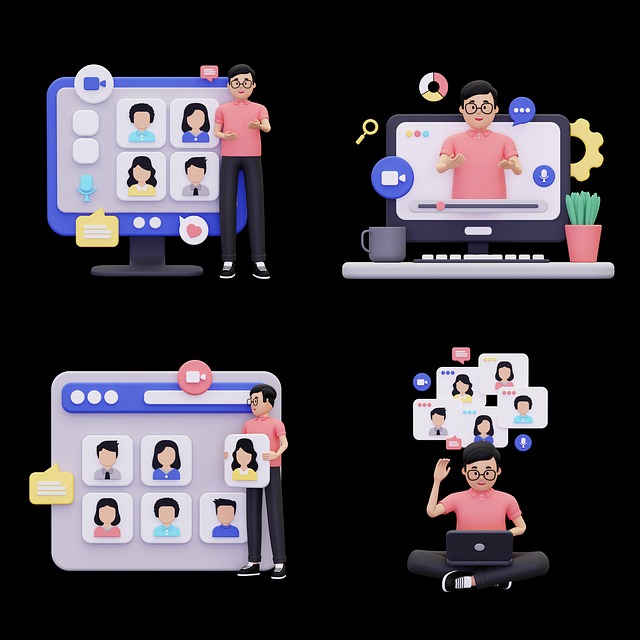AI Chatbots Online: Businesses leverage these tools for significant gains, automating customer interactions, reducing costs, and boosting efficiency. ROI evaluation goes beyond financial metrics, encompassing user engagement, satisfaction, and strategic initiatives like targeted marketing and improved product development. Case studies highlight substantial benefits, including faster response times, higher customer satisfaction, efficient order processing, and enhanced patient engagement in sectors like e-commerce and healthcare.
“Unleash the power of AI chatbots to drive business growth and boost online presence! This comprehensive guide delves into the crucial topic of Chatbot Return on Investment (ROI). We explore how these conversational AI tools can transform customer interactions, increase efficiency, and drive revenue. From defining key metrics to implementing successful strategies, we provide insights on accurately measuring chatbot ROI. Discover real-world case studies showcasing the profound impact of AI chatbots on various industries.”
- Understanding Chatbot ROI: Definition and Key Metrics
- How AI Chatbots Can Drive Business Value Online
- Strategies for Accurately Measuring Chatbot Investment Returns
- Case Studies: Successful Chatbot Implementations and Their Impact
Understanding Chatbot ROI: Definition and Key Metrics

In the realm of AI chatbots online, Return on Investment (ROI) is a critical metric to gauge the success and profitability of chatbot implementation. It essentially measures the efficiency and effectiveness of an investment in AI technology by quantifying the benefits gained relative to the costs incurred. For businesses, understanding ROI involves assessing both direct and indirect savings, increased revenue, improved customer satisfaction, and enhanced operational efficiency driven by AI chatbots.
Key metrics to consider when evaluating chatbot ROI include cost per interaction, average handle time reduction, customer satisfaction scores, and conversion rates. Cost per interaction refers to the expenses associated with maintaining and operating the chatbot, divided by the number of user interactions. Average handle time reduction tracks how much time agents spend on each customer query after introducing chatbots, showcasing improved operational efficiency. Customer satisfaction scores gauged through surveys or analytics provide insights into user experiences, while conversion rates measure the percentage of users completing desired actions (e.g., purchases) facilitated by the chatbot.
How AI Chatbots Can Drive Business Value Online

AI chatbots are transforming the way businesses operate in the digital space, offering a multitude of benefits that drive significant value. These intelligent virtual assistants can handle a wide range of customer interactions, from answering frequently asked questions to processing orders and providing personalized recommendations. By automating these tasks, companies can reduce operational costs, improve efficiency, and free up human resources to focus on more strategic initiatives.
Moreover, AI chatbots enhance customer experiences by delivering instant, 24/7 support, which is particularly valuable in today’s fast-paced online environment. They can collect and analyze customer data, enabling businesses to gain deeper insights into consumer behavior and preferences. This information can then be leveraged for targeted marketing campaigns, improved product development, and enhanced overall customer satisfaction. With their ability to scale effortlessly, AI chatbots ensure that businesses can meet growing demand without compromising on quality or speed of service.
Strategies for Accurately Measuring Chatbot Investment Returns

Measuring the return on investment (ROI) for AI chatbots is a multifaceted process, especially given their dynamic role in modern customer interactions. To accurately assess chatbot performance, businesses should employ strategies that go beyond basic financial metrics. One effective approach is to track user engagement and satisfaction levels before and after chatbot implementation. By analyzing website analytics, help desk tickets, and customer feedback, companies can gauge the impact of AI chatbots on customer experience and loyalty.
Additionally, attributing revenue generated through chatbot interactions requires a comprehensive view. This includes considering the cost savings from reduced agent workload, the potential increase in sales or cross-selling opportunities due to proactive customer support, and the enhanced brand reputation that stems from efficient, 24/7 availability. For online businesses, especially those with high customer interaction volumes, integrating AI chatbots can lead to significant ROI improvements when strategically measured and optimized.
Case Studies: Successful Chatbot Implementations and Their Impact

Case Studies: Successful Chatbot Implementations and Their Impact
Many businesses have witnessed significant improvements in their operations after integrating AI chatbots online. For instance, a leading e-commerce retailer deployed a chatbot to handle customer queries and order updates. The results were remarkable; the chatbot reduced response times by 40%, increased customer satisfaction scores, and handled over 30% of all customer interactions, freeing up human agents for complex issues. This implementation highlights how AI chatbots can enhance efficiency and improve customer experience.
Another successful story comes from a healthcare provider who introduced a chatbot to provide medical information and schedule appointments. It resulted in better patient engagement, with 75% of users preferring the chatbot’s assistance over traditional call centers. Moreover, the chatbot successfully directed 60% of patients to the right resources, reducing the administrative burden on staff. These case studies demonstrate the diverse benefits of AI chatbots, from increased operational efficiency to enhanced customer interactions.
AI chatbots have emerged as powerful tools to enhance customer experiences and drive business value online. By understanding key metrics like user engagement, conversion rates, and cost savings, businesses can accurately measure the return on investment (ROI) of their chatbot implementations. Through strategic measurement and successful case studies, it’s evident that AI chatbots not only improve operational efficiency but also contribute significantly to revenue growth. Embracing these innovative solutions can revolutionize customer interactions and set businesses apart in today’s digital landscape.
